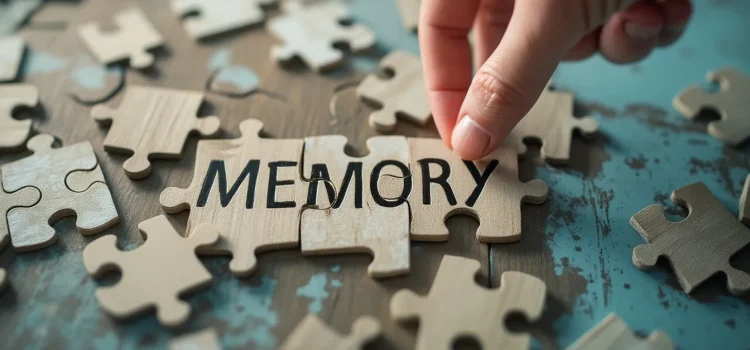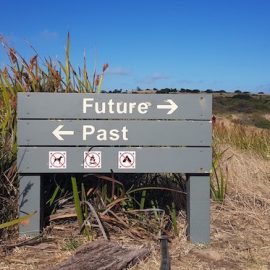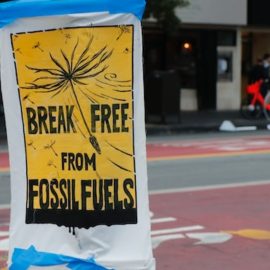
How does your brain transform experiences into lasting memories? What determines which moments you’ll remember and which you’ll forget?
In her book Remember, Lisa Genova reveals how memories are formed through four fundamental steps in the brain: encoding, consolidation, storage, and retrieval. She explains that memory formation isn’t just about storing information—it’s an active process shaped by attention, emotion, and context.
Keep reading to discover the fascinating journey of how your experiences become memories, and learn why some moments stick while others fade away.
How Memories Are Formed
Although there are different types of memories, each kind is created in the same way. Genova explains how memories are formed through four basic steps in the brain: encoding, consolidation, storage, and retrieval.
Step 1: Encoding
During encoding, your brain turns sensory input into a format that it can store. (Shortform note: This format consists of electrical signals created by the activation or “firing” of neurons. The rate at which neurons fire in specific patterns represents pieces of information, and the brain uses this code to process and store that information.)
Step 2: Consolidation
During consolidation, your brain—specifically, your hippocampus, located in the middle of the brain—links this new information to existing neural patterns, or information you already know. (Shortform note: An essential part of the consolidation process is replay, when the brain reactivates the neural patterns of the memory being consolidated—essentially, playing back the memory. This largely occurs during periods of rest (either when you’re asleep or when you’re awake but not doing anything mentally strenuous). This means that short breaks during encoding can enhance memory formation (as opposed to taking in a deluge of new information without pausing to let it consolidate).)
Step 3: Storage
During storage, explains Genova, your brain changes structurally and chemically to keep these patterns in place. These changes can include the creation of new pathways between neurons and brain areas or even the formation of new neurons (neurogenesis).
(Shortform note: The brain’s ability to change physically in response to stimuli is known as neuroplasticity. This includes the processes of synaptic plasticity (the creation of new pathways) and neurogenesis that Genova describes. However, recent research suggests that a third aspect of neuroplasticity may play a major role in the storage of memories: myelination. This is a process by which neuronal connections are coated in myelin, a substance made of fat and protein that insulates the connections and makes them more efficient, similar to insulating electrical wires.)
Step 4: Retrieval
Finally, during retrieval, you access the stored information as memory, writes Genova.
Genova explains that memories are not stored in a single location in the brain, but rather distributed throughout the neural networks that were active during the original experience of creating that memory. When you remember something, you’re not accessing a perfect recording but rather reconstructing the experience by reactivating these neural patterns. This explains why memory is both powerful and imperfect—it’s a dynamic process of reconstruction rather than a simple playback mechanism. Next, we’ll explore the factors that come into play that lead us to remember or forget.
(Shortform note: Retrieval can be further broken down into four types: recall (remembering a piece of information without any cues, or reminders), recognition (recognizing information you know once you see it again), recollection (piecing together a memory through logic and clues), and relearning (when you’ve already learned something but forgotten it—learning it a second time is easier).)
What Do We Remember?
Genova explains that we don’t encode and store all the information we perceive. We immediately forget—or don’t even notice—many things. In order to turn something into a memory, we have to pay attention to it. This means we’ll only remember things that catch our attention or that we consciously choose to pay attention to. This is why we usually ignore or forget things we’ve done that are automatic behaviors, like making coffee every morning or driving home from work. This is also why you’ll have more trouble remembering something if your attention to it is divided, so multitasking will make you less likely to form strong and accurate memories.
(Shortform note: Experts identify four types of attention: sustained attention, in which you focus on a single stimulus or task for an extended period; selective attention, in which you filter out many stimuli to focus on just one; alternating attention, in which you switch your attention back and forth between different stimuli or tasks; and divided attention (which Genova mentions), in which you process or respond to two or more stimuli at the same time. It’s not actually possible to focus on more than one thing at a time, so divided attention is really just alternating attention attempted simultaneously. When you are able to do two things at once, it’s when one of the activities is carried out by muscle memory, which means you’re not actually focusing on it.)
According to Genova, we’re also more likely to encode and remember things that elicit an emotional reaction. Emotion is what makes things meaningful to us, and it acts as a signal to the brain to encode what’s happening and store that information in our long-term memory. This is why we remember things that are linked to strong emotions better than those that feel neutral.
| Why Emotion Matters in Memory From an evolutionary standpoint, the function of emotions is to tell us what to pay attention to and react to in our environment to aid in our survival. Because of this, emotion is essential to determining what’s important and what’s not, which means it’s central not only to memory but also to decision-making. Research into the somatic marker hypothesis—which states that emotions create physiological responses in us that impact our decisions—shows that people with impairments in the emotional processing areas of their brains made poorer decisions. It also suggests that somatic markers (physiological responses) could be encoded into our implicit memories (information that we store without meaning to and which we can’t consciously retrieve), impacting our behavior later. |
What we remember can also depend on the context in which we formed the memory. Genova explains that we’re better able to retrieve information when we’re in the same context in which we initially learned it. This can include physical location—it’s easier to remember something when you’re in the same place you were when you formed the memory. We also remember information better when our internal state matches the conditions present during initial learning. This includes both emotional states and physiological states. For example, we’re more likely to remember positive experiences when we’re in a good mood.
(Shortform note: According to context-based theories of memory, the context surrounding a memory is enclosed by markers called event boundaries, or context shifts. For example, when you get into your car, this marks a shift from one context (outside your car) to a new one (inside your car). Getting out of your car then provides another event boundary. Memories separated by these boundaries are easier to retrieve when their context is replicated, whereas unclear boundaries between contexts can make retrieval harder because many different memories are competing to be retrieved. This is one reason why learning and remembering may be more effective when it’s broken up into chunks rather than long, continuous periods.)
Sometimes, though, we simply can’t remember something we mean to, or our memory is actually incorrect.
Exercise
Consider Genova’s explanation that we must pay attention to something to remember it and that multitasking interferes with memory formation. Think of a specific situation where you want to improve your memory. What distractions could you eliminate, and how will you ensure you’re fully focused on what you want to remember?






